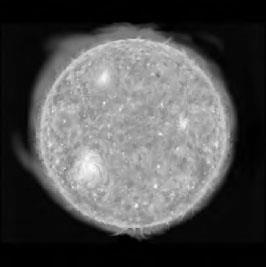At the Heart of the AtomDid Physicists Recognize the Military Uses of Fission? |
What is nuclear fusion? |
Nuclear fusion is the opposite of fission. Two nuclei join, or fuse together, forming a more massive nucleus. The mass of the resultant nucleus is less than that of the reacting nuclei, so energy is released. Because the reacting nuclei are both positively charged, there is a large repulsive force between them. To overcome this force the reacting nuclei must have very high energy. Fusion was first observed by the British physicist Mark Oliphant (1901-2000) in 1932.
A typical fusion reaction involves two isotopes of hydrogen: 2H, or deuterium, and 3H, or tritium. They fuse to produce 4He, releasing a neutron. The energy released is more than a million times larger than that released when an electron combines with a proton to produce a hydrogen atom.

